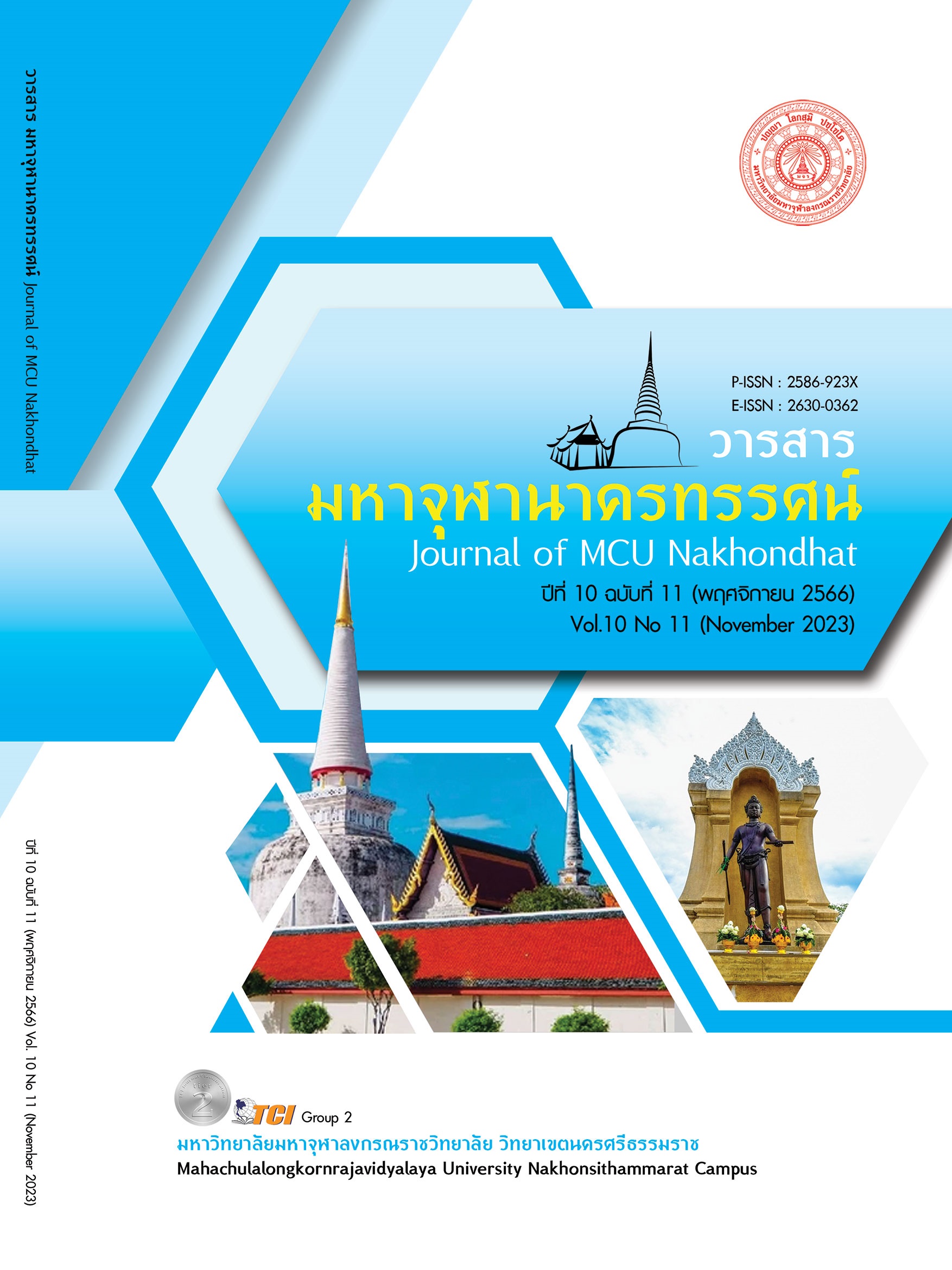HUMAN RESOURCE DEVELOPMENT ACCORDING TO THREEFOLD TRAINING PRINCIPLE OF TAKUT SUBDISTRICT MUNICIPALITY, MUEANG SARABURI DISTRICT, SARABURI PROVINCE
Main Article Content
Abstract
This research article has the objectives 1) to study the level of human resource development according to the Threefold Training principle of Takut Subdistrict Municipality, Mueang Saraburi District, Saraburi Province and 2) to study the problems, obstacles and suggestions of human resource development in accordance with the Threefold Training principle of Takut Subdistrict Municipality, Mueang Saraburi District, Saraburi Province. This is a quantitative research. We take a sample (Target group) that is 88 personnel by using random method from the sampling. The tools were used to collect data by questionnaires. Therefore, the used statistics for data analysis were the frequency, the percentage, the mean and the standard deviation. The research found that. 1) Human resource development according to the Threefold Training principle of Takut Subdistrict Municipality, Mueang Saraburi District, Saraburi Province. Overall, it is moderate considering all sides. It is found to be moderate in order from above to below as follows: Level 1 Morality in overall ( = 3.44, S.D. = 0.415) followed by the second level of intelligence. Overall, it is moderate (
= 3.36, S.D. = 0.403) and Level 3 concentration overall is moderate (
= 3.30, S.D. = 0.495) 2) Problems and obstacles. Budget constraints for human resource development may require a large budget such as training, support or organisation of development projects. Where financial resources are limited, transition difficulties to learn and develop resources according to the Trisikha principle should be planned and managed appropriately as well as maintenance.Develop personnel, promote learning, develop skills and create environments that support the development and growth of personnel in the organization.
Article Details

This work is licensed under a Creative Commons Attribution-NonCommercial-NoDerivatives 4.0 International License.
References
กนิษฐา ฐิติวัฒนา. (2542). แรงจูงใจใฝ่สัมฤทธิ์และความต้องการการพัฒนาตนเองของนายช่างเทคนิค สังกัดกรมทางหลวง. ใน วิทยานิพนธ์วิทยาศาสตรมหาบัณฑิต สาขาวิชารัฐศาสตร์. มหาวิทยาลัยเกษตรศาสตร์.
เทศบาลตำบลตะกุด. (2565). แผนอัตรากำลัง 3 ปี ประจำปีงบประมาณ พ.ศ. 2564 - 2566. เรียกใช้เมื่อ 1 มิถุนายน 2566 จาก https://tk.go.th/index/load_data/?doc=12942
เทิดศักดิ์ บัวสอน และคณะ. (2560). รูปแบบการพัฒนาทรัพยากรมนุษย์ของพนักงานเทศบาลตำบลในจังหวัดร้อยเอ็ด. ใน ดุษฎีนิพนธ์รัฐประศาสนศาสตรบัณฑิต สาขาวิชารัฐประศาสนศาสตร์. มหาวิทยาลัยราชภัฏมหาสารคาม.
ธงชัย สันติวงษ์. (2546). การบริหารทรัพยากรมนุษย์. (พิมพ์ครั้งที่ 11). กรุงเทพมหานคร: บริษัทประชุมช่างจํากัด.
ธนิต เหงี่ยมสมบัติ. (2560). รูปแบบการพัฒนาทรัพยากรมนุษย์ของพนักงานเทศบาลตำบล ในจังหวัดมหาสารคาม. วารสารช่อพะยอม, 28(1), 181 - 192.
พระครูพิสัยปริยัติกิจ (อคฺควณฺโณ) และศราวุธ ปลอดภัย. (2561). การพัฒนาทรัพยากรมนุษย์ในองค์กรตามหลักไตรสิกขา. วารสาร มจร การพัฒนาสังคม, 3(2), 62 - 75.
พระธรรมปิฎก (ป.อ. ปยุตฺโต). (2539). การศึกษากับการพัฒนาทรัพยากรมนุษย์. กรุงเทพมหานคร: โรงพิมพ์การศาสนา.
พระมหาศุภกิจ (สุภกิจฺโจ). (2553). การพัฒนาทรัพยากรมนุษย์ตามหลักไตรสิกขา กรณีศึกษาศูนย์การเรียนชุมชน อำเภอพล จังหวัดขอนแก่น. ใน วิทยานิพนธ์พุทธศาสตรมหาบัณฑิต สาขาวิชารัฐประศาสนศาสตร์. มหาวิทยาลัยมหาจุฬาลงกรณราชวิทยาลัย.
พระราชบัญญัติเทศบาล (ฉบับที่ 12). (2496). ราชกิจจานุเบกษา. เล่ม 70 ตอนที่ 14 หน้า 222 (13 กุมภาพันธ์ 2496).
อนุชาติ ปิยนราวิชญ์. (2559). การพัฒนาทรัพยากรมนุษย์กับประสิทธิผลองค์การของสำนักงานเขตบางเขน กรุงเทพมหานคร. ใน สารนิพนธ์รัฐประศาสนศาสตร์มหาบัณฑิต คณะศิลปะศาสตร์. มหาวิทยาลัยเกริก.


